Bay of Plenty mother Pam Coburn says she faces a “death sentence” – expecting to die within the next five years if she does not pay $180,000 to travel to Germany for surgery. Hamilton teenager Kai Hay cannot eat, drink or work and says she “desperately” needs the same surgery but is struggling to raise money.
And Auckland teenager Freya Dibben says her life “looks very different now” after having the surgery last year. The treatment they seek to address abdominal vascular compression syndromes is unavailable in New Zealand. The trio want this to change. Megan Wilson reports.
Pam Coburn has not eaten anything since March 2022.
The last thing she ate was her son’s birthday cake when she ended up “on the floor in a ball in pain”.
She likens the pain of swallowing food or liquid to “swallowing a gobstopper with knives that’s hot”.
Since 2022, Pam has been feeding and drinking through a tube that goes into her nose and intestines – something she is prepared to do “for the rest of my life”.
Pam was diagnosed with Ehlers-Danlos Syndrome in September and a comorbidity Abdominal Vascular Compression Syndromes in March.
EDS is a group of connective tissue disorders that are generally inherited. Common characteristics include joints that move more than normal, unusually stretchy skin and fragile tissue with wounds that take longer to heal.
Vascular compression syndromes are a group of conditions occurring when blood vessels are under abnormal pressure, restricting blood flow, which can make a person feel weak and cause extreme pain.
Health NZ says New Zealand had a relatively small population and therefore small volumes of rare conditions and related treatments. There was no single surgery to treat the conditions.
While one “experimental” surgery in New Zealand could be recommended, it says creating the high-cost treatment pool – application-based funding for overseas treatments – recognised the country could not provide all options available elsewhere.
Plummeting weight: ‘I was eating less than the kids’
Pam, 40, lives in Athenree, near Tauranga, with her husband, Jon, and their sons Benny, 8, and Ollie, 6.
She used to be able to walk, run, ride her bike and practice yoga.
Now, she doesn’t leave the house.
Speaking to the Bay of Plenty Times at her home, Pam sat on her couch with a bag containing two pumps – one with liquid nutrients and another with water.
She recalled becoming ill in August 2021 and never recovering.
The pain started under her shoulder blade. She then noticed she couldn’t walk as far during her daily morning walks.
Fatigue, heaviness, and abdominal pain set in.
Pam says her gastroparesis returned – a condition she was diagnosed with at age 30 where the stomach is unable to empty itself properly – and she couldn’t keep food down.
“I was eating less than the kids.”
The pain led her to the Emergency Department several times.
“[Once] I was vomiting green – there was something seriously wrong.”
She says one doctor advised her to see a psychiatrist.
Pam says she was referred to a gastrointestinal surgeon and discharged.
“I got sent home with no plan … and I just had to wait for an appointment, and it took six months, and in that time I lost 10kg.”
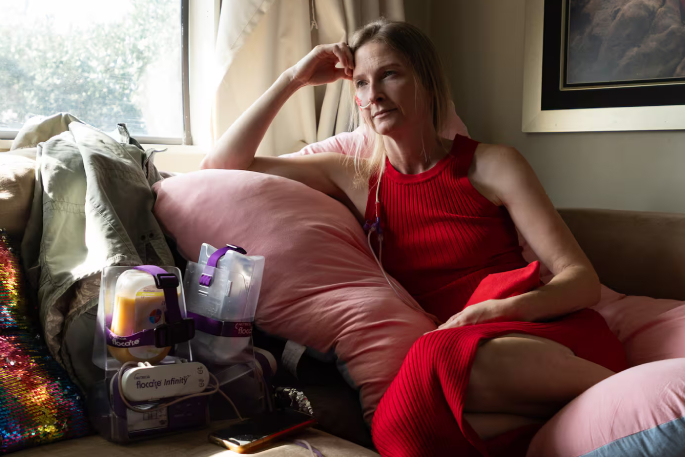 Pam Coburn has Ehlers-Danlos Syndrome and Abdominal Vascular Compression Syndrome. She needs to raise $180,000 for surgery which is not available in New Zealand. Photo / Alex Cairns.
Pam Coburn has Ehlers-Danlos Syndrome and Abdominal Vascular Compression Syndrome. She needs to raise $180,000 for surgery which is not available in New Zealand. Photo / Alex Cairns.
Raising $180k to go to Germany
Pam was diagnosed with EDS which she says makes her digestive tract “stretchy” and her stomach “elongated”.
In March came the diagnosis of AVCS – nut-cracker syndrome, May-Thurner syndrome and abnormalities with Median Arcuate Ligament Syndrome.
Pam was told she needed surgery in Germany.
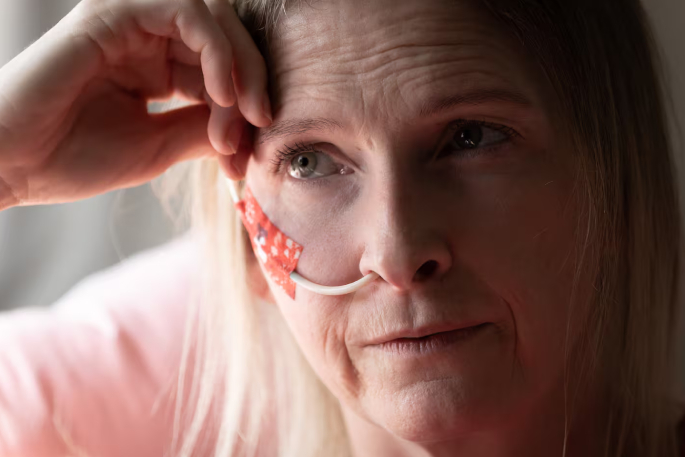 Pam Coburn is planning to go to Germany for surgery in June. Photo / Alex Cairns.
Pam Coburn is planning to go to Germany for surgery in June. Photo / Alex Cairns.
She planned to go with her mother this month and says they needed a “minimum” of $180,000 – more if something went wrong.
To pay for it, she and her husband – who worked fulltime and managed the household – planned to add to their mortgage and use retirement funds.
They were also raising money via a Givealittle page.
Pam says she had not applied for the high-cost treatment pool for surgery in Germany because she believed it would not be approved, understanding it was seen as “experimental”.
She says AVCS meant her left renal vein was “squashed” by other arteries or organs. The surgery would wrap a sliced tube around her vein to stop it being compressed.
Pam will ‘starve to death’ without surgery
Pam says she had gone “downhill” since January, making the surgery more “time-sensitive”.
“I’m not gaining weight … I am in so much pain that I cannot do more than sit on the couch. When the kids go to school, I sleep.
“If I go anywhere, it’s for a doctor’s appointment.
 Pam Coburn and her family pictured in April 2021 - four months before she got sick. Photo supplied.
Pam Coburn and her family pictured in April 2021 - four months before she got sick. Photo supplied.
“The unfortunate thing here is if we didn’t go and have surgery in Germany, we can’t get it in New Zealand so within the next five years I’ll die.
“And it might even be sooner. They can’t tell how fast your organs will fail but that’s what it comes down to. You essentially starve to death because you don’t absorb the nutrients.”
Future ‘snatched’ away
Pam says the hardest thing about her illness was the possibility of dying.
“We saw the future and then that just got snatched away.”
She says it would take a year to recover from surgery.
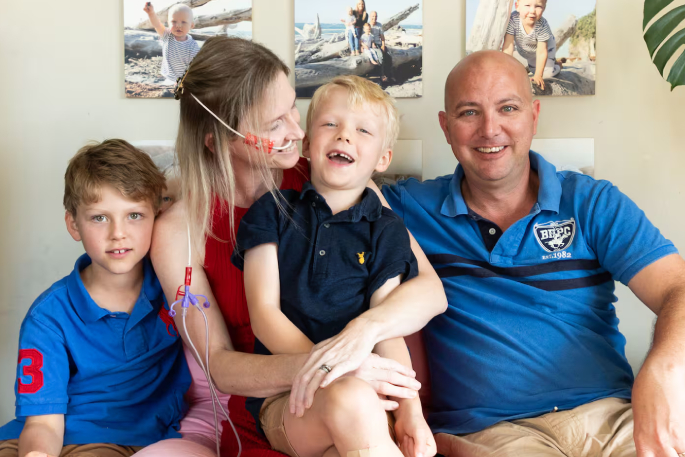 Pam Coburn with her husband Jon Coburn and their sons Benny (left) and Ollie. Photo / Alex Cairns.
Pam Coburn with her husband Jon Coburn and their sons Benny (left) and Ollie. Photo / Alex Cairns.
Pam says it had been a “fight” to get her diagnosis in the public system. She wanted “knowledgeable” doctors across New Zealand to be able to diagnose AVCS and for patients to access surgery without going overseas.
“I want for those of us who need treatment to get it because otherwise we will die … it’s a death sentence just living in New Zealand accepting ourselves as we are, which is how we’ve been left.”
Hamilton teen seeks ‘lifesaving’ surgery
Hamilton teenager Kai Hay, 17, was diagnosed with EDS in October and AVCS in December after “a lot of fighting”.
For four years: “I just dealt with dismissal after dismissal by doctors not believing me”.
Her EDS symptoms included “widespread” joint pain, dislocations and fatigue.
Since last year, she experienced “severe” abdominal pain, vomiting, nausea, and an inability to eat and drink due to AVCS - symptoms previously attributed to an eating disorder and anxiety.
Private specialists confirmed she had EDS and AVCS and she was told she needed surgery in Germany, costing between $160,000 and $180,000.
Kai, who was 17 and had left home, says that was “not a cost I can meet by myself”.
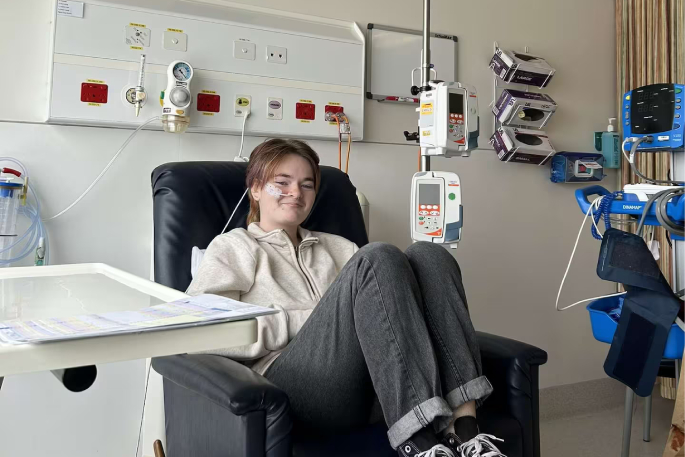 Hamilton teenager Kai Hay, 17, was diagnosed with EDS and AVCS last year. Photo supplied.
Hamilton teenager Kai Hay, 17, was diagnosed with EDS and AVCS last year. Photo supplied.
Kai could no longer work due to her health and could not eat or drink.
“The surgery is needed now more than ever.”
It was proving difficult for her to raise money via a Givealittle page. Having the surgery available in New Zealand would be “life-changing” for her and others in her position.
“We desperately need change.”
Post-surgery: ‘My life is a life now’
Dunedin teenager Olivia Adie was already tube-fed when she was diagnosed with AVCS in July. She had surgery in Germany in September.
“I was gonna die. I was still dropping weight when I was 39kg.
“If you aren’t fortunate enough to be able to get that money together … we have a country where they are willing to people die.”
The 17-year-old went from sleeping 20 to 22 hours per day, using a wheelchair, and only leaving the house for health appointments to doing the previously “impossible”: Going to school, playing hockey and socialising with friends.
“My life is a life now.”
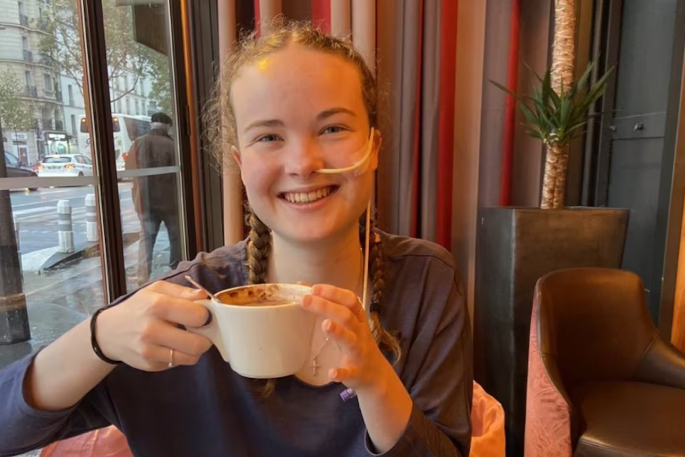 Dunedin teenager Olivia Adie had surgery for AVCS in September 2023. Photo supplied.
Dunedin teenager Olivia Adie had surgery for AVCS in September 2023. Photo supplied.
Olivia says she would not know the full effects of the surgery until eight to 12 months had passed.
She travels to Auckland and Hamilton regularly for private post-surgery treatment.
Auckland teenager Freya Dibben was diagnosed with EDS in 2019, then suspected AVCS last year. She was unable to eat, walk, or attend school.
A vascular surgeon referred her to doctors in Germany, who diagnosed her (from NZ scans) with vascular compressions, a month before she went there.
Freya had surgery in September and was in Germany for two months. She travelled with her mother and it cost all up about $180,000.
“It was very taxing on your body and mentally ... but I am incredibly lucky because my life looks very different now.”
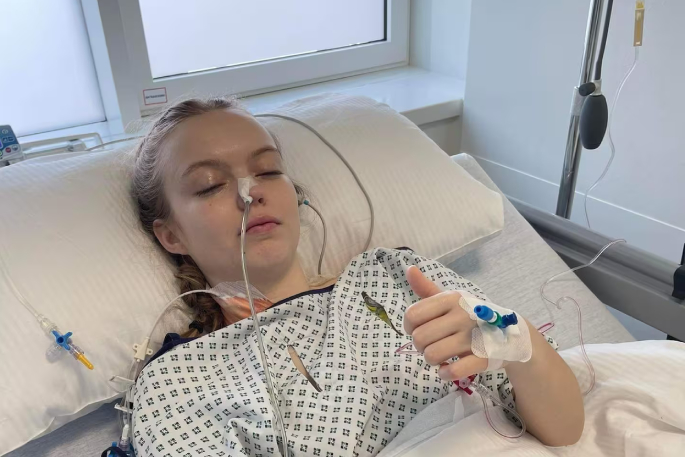 Freya Dibben had surgery in Germany in September and had 'amazing' results. Photo supplied.
Freya Dibben had surgery in Germany in September and had 'amazing' results. Photo supplied.
Freya says she could eat normally again without pain.
“Nothing comes back up … it’s amazing what the surgery has done for me.
“I run around, I go to uni fulltime. From not going to school, not eating, not being able to really leave my bed, to living, I would say a very normal life, is just crazy.”
Freya hoped the surgery would become available in New Zealand. She also wants more education for doctors..
“You can’t survive like this - it’s not sustainable long-term.
Surgeon has 91 AVCS patients
Vascular surgeon Dr Chris Holdaway told the Bay of Plenty Times he had seen 86 patients with AVCS in 12 months - 15 of which he had helped travel to Germany to have surgery.
His office says there were currently 91 patients on his books.
Chris says nut-cracker syndrome was one of the four major abdominal vascular compressions and was associated with the left renal vein. He says this was where 80 or 90 per cent of people with AVCS experienced trouble.
Chris, a former Waikato Hospital head of surgery, says he had been to Germany to learn about the left renal vein surgery and was investigating being able to perform it in New Zealand.
 Vascular surgeon Dr Chris Holdaway. Photo / Alex Cairns.
Vascular surgeon Dr Chris Holdaway. Photo / Alex Cairns.
Chris explained the surgery involved putting a ringed piece of reinforced polytetrafluoroethylene graft cut down one side and wrapped around the left renal vein – a large structure in the abdomen.
The rings stopped the vein from being compressed.
Chris says he had used these grafts “all my working life” to replace arteries in legs and elsewhere.
Te Whatu Ora responds
A statement from Health New Zealand Te Whatu Ora says some people with weak connective tissue diseases could develop vascular compression syndromes as a complication.
The diseases were life-long, varying in severity and complexity, and problems could accumulate over time.
“A diagnosis can only be made after criteria are met, and we seek to deliver evidence-based assessment and treatment aligned with best evidence.”
Treatment options differed for each individual and a range of vascular services were available across New Zealand.
Patients were managed in a multidisciplinary manner including primary care, allied health and specialists when needed. Treatments could involve pain management, physiotherapy and splinting. Many responded well and did not need further interventions.
It says in some individual circumstances, a multidisciplinary team may recommend vascular release surgery, but this was considered experimental.
On balancing local access to specialised care, it says there was “good evidence” centralisation and higher patient volumes achieved better patient outcomes.
This included ensuring appropriate infrastructure and support services.
It says it recognised sometimes accessing all multidisciplinary components of care in the health system could be challenging, and encouraged patients to speak to their primary care team or specialist.
What is the high-cost treatment pool?
The Health NZ statement says creating the high-cost treatment pool recognised New Zealand could not provide all treatments, technology and expertise available in other countries.
“Because New Zealand has a relatively small population and hence has small volumes of rare conditions and related treatments, we also acknowledge that some patients who have problems which may arise from vascular compression complications may seek overseas treatment …”
“This means that although we could have a clinician train to perform a specialist surgical treatment, unless the specialist clinician regularly performed sufficient volumes of the treatment, they would be unable to maintain their skills and expertise.
Clinical specialists treating patients with rare and complicated cases could apply to the pool to support access to appropriate treatment options.
The money was for “one-off” treatments not otherwise publicly funded, such as those outside of New Zealand or in private hospitals, and the application process required supporting documentation and “considerable clinical discussion”.
No surgery was automatically ineligible for funding. Applications were assessed against eligibility criteria by a panel of Health NZ chief medical officers. Each case was also considered for “exceptional circumstances” beyond that criteria.
Full costs were covered for successful applications.

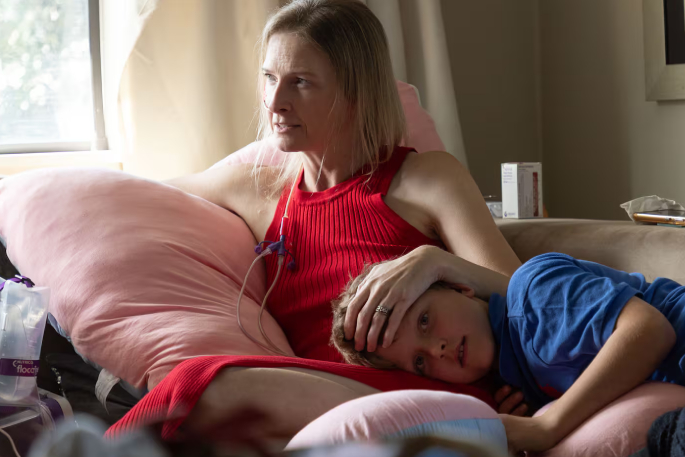

0 comments
Leave a Comment
You must be logged in to make a comment.